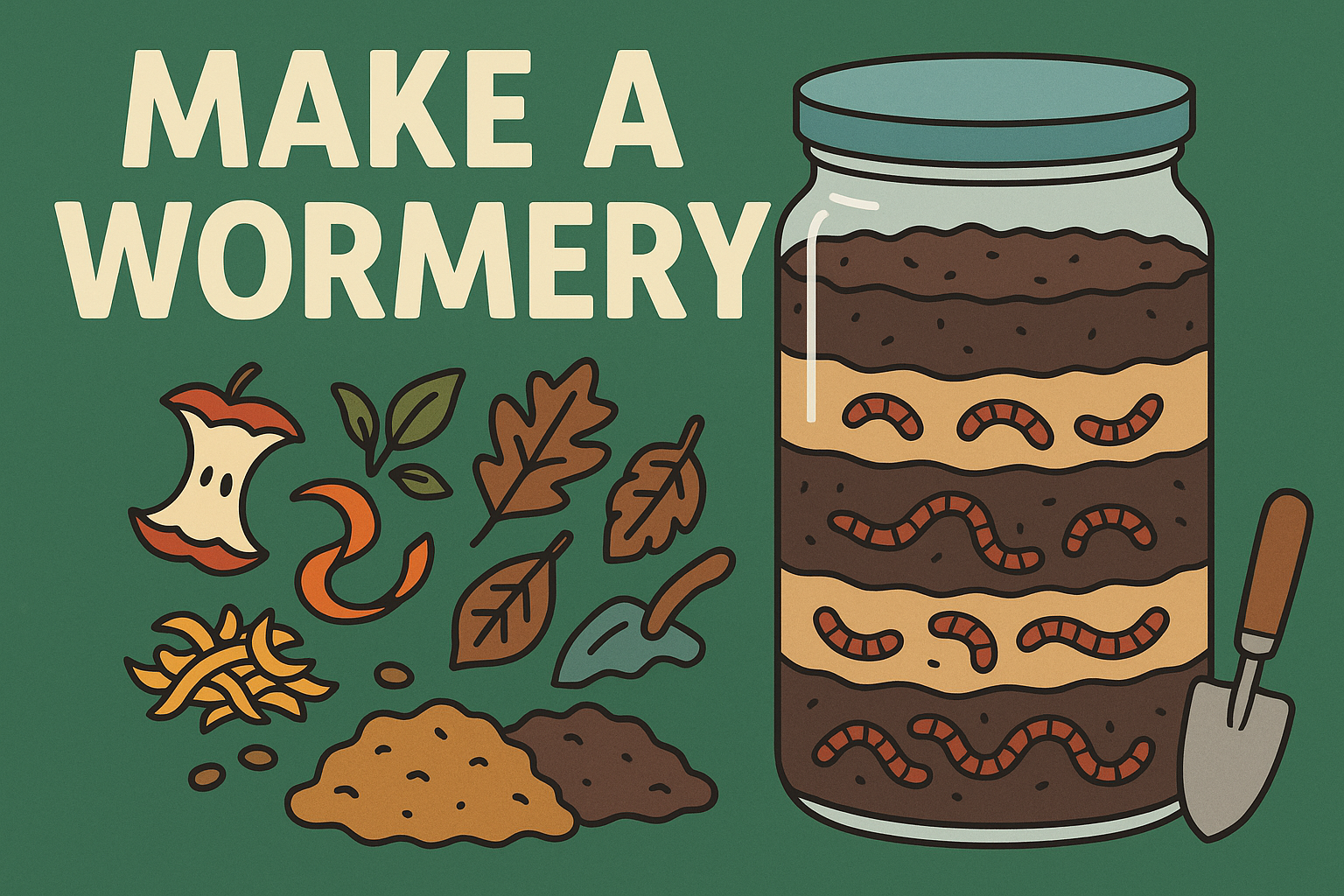Building a wormery is a brilliant way for children to explore what happens beneath the soil. By creating a clear-sided container filled with layers of earth, sand, and compost, kids can observe how worms tunnel, mix soil, and break down organic matter. It’s science, nature, and wonder all rolled into one!
This activity is perfect for introducing concepts like decomposition, recycling, and ecosystems. Kids will be fascinated watching worms at work—and it’s easy to set up using things you already have at home or in the garden.
Materials Needed
- Large clear jar, plastic bottle (cut and safe), or container
- Soil, sand, and compost
- Vegetable scraps or leaves
- Dark paper or cloth to cover the jar
- Worms (from your garden or compost bin)
Tools Needed
- Spoon or small trowel
- Scissors (if cutting a plastic bottle)
Steps
- Prepare the Container
Use a clear container so you can see inside. If using a plastic bottle, carefully cut off the top (with adult help). - Add Soil Layers
Layer soil, compost, and a little sand to create visible layers—about halfway up the container. - Add Worms
Collect worms from the garden and gently add them on top. They’ll tunnel down themselves. - Add Food
Place a small amount of chopped veg peelings or leaves on the surface for the worms to feed on. - Cover and Observe
Wrap the container with dark paper or cloth to simulate underground conditions. Remove the cover briefly each day to observe changes. - After a Week or Two
Release the worms back into the garden or compost heap.
Variations
- Mini Wormery: Use a small jar for a quicker, space-saving version.
- Observation Journal: Encourage kids to draw or write what they see happening each day.
- Layer Experiment: Use coloured sand or different soil types to observe mixing over time.
- Worm Names: Give each worm a name and invent little backstories for them—just for fun!


Leave a Reply